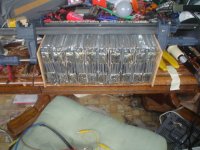Sounds perfect.
The "break in" for batteries like a ping is to leave them on the charger till they balance. On the ping, that's all the lights on the bms lit. The charger may cycle on and off for quite some time before all the bms lights go on. The bms is bringing down the highest cells when the green light on the charger is on, then it turns back on to try to charge the cells that have the bms lights off. After that, I still recommend that you make the first few rides very short, then put the battery back on charge till all the bms lights are lit.
This just makes sure that your battery is really really fully charged. My experience, is that when all the lights start lighting up closer to the same time, your battery is now broken in (just balancing better) and ready for long rides.
After the break in, go ahead and leave it on the charger overnight, or till all the led's light up fairly regular. You can ride around after a partial charge if you have a need to, but try to make every charge a full one, till all the leds light. As the battery ages, this might start taking overnight to do it.
Don't be afraid to ride till the bms shuts off the battery when you need to. But if you can charge, do it. The battery will stay better balanced if it is not discharged deeply each ride. So if your daily ride takes 30% of the battery, don't go and ride three days then charge. Just charge daily.
I highly recommend protecting the battery a bit more than the way it came. Dings and chafing can ruin it. I like to custom make a little box for it, that fits super tight. I made the first one from a cookie sheet, but later learned to use plastic and tape to make boxes. Lids to plastic storage boxes work good, and so do old political signs. Fix it so any rubbing around takes the abrasion on the outside, leaving the inside protected from whatever is in the box or bag your are using. One little pebble in there, and it can rub a hole in the battery.


